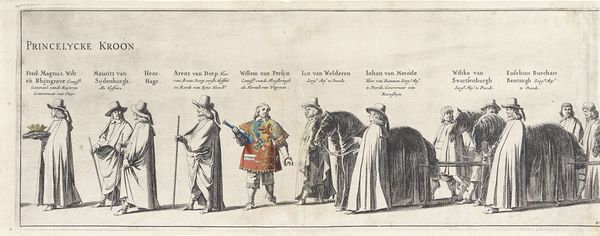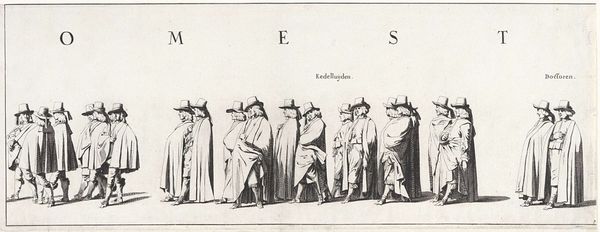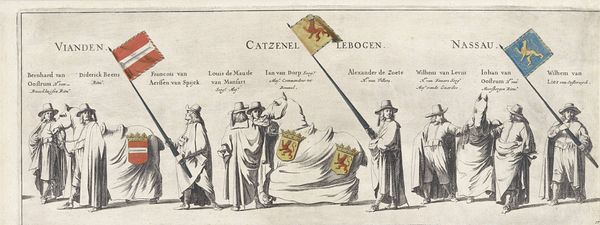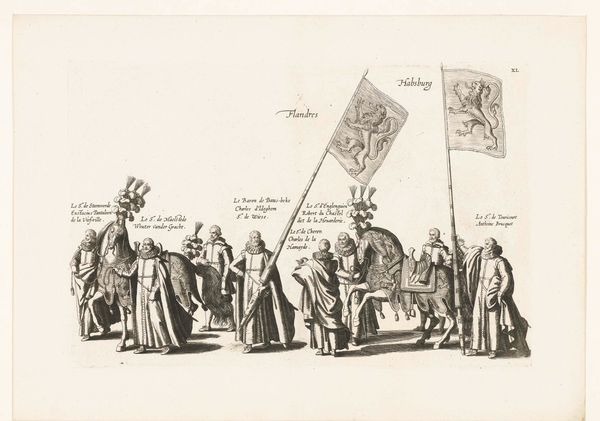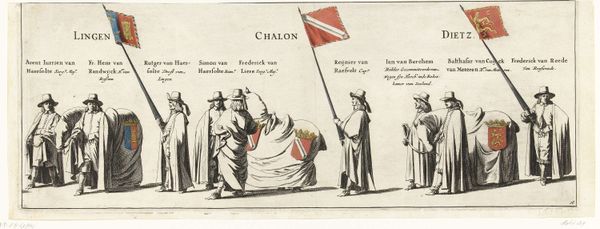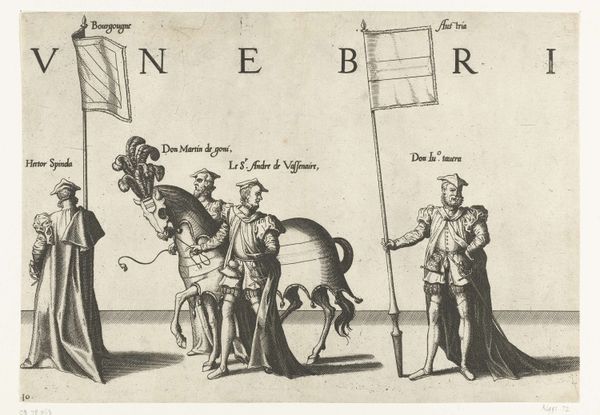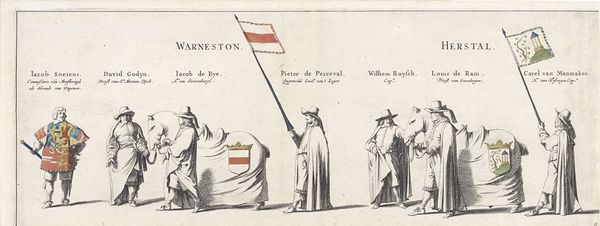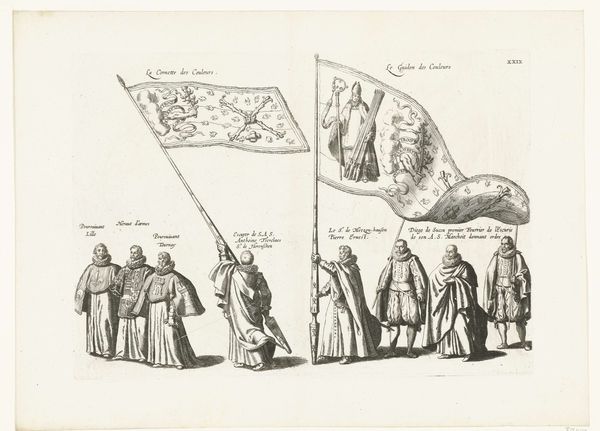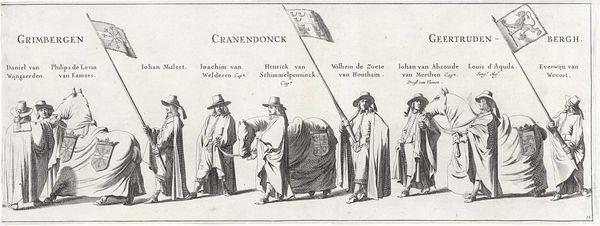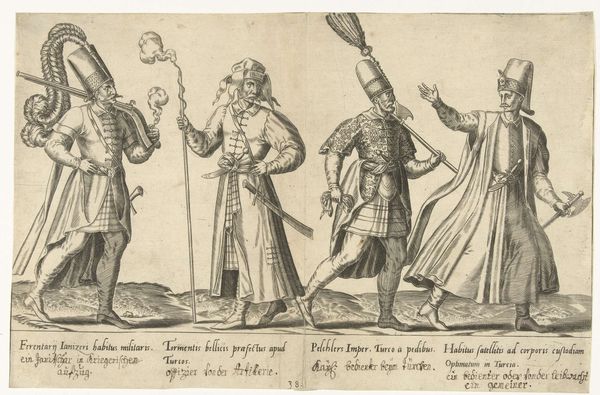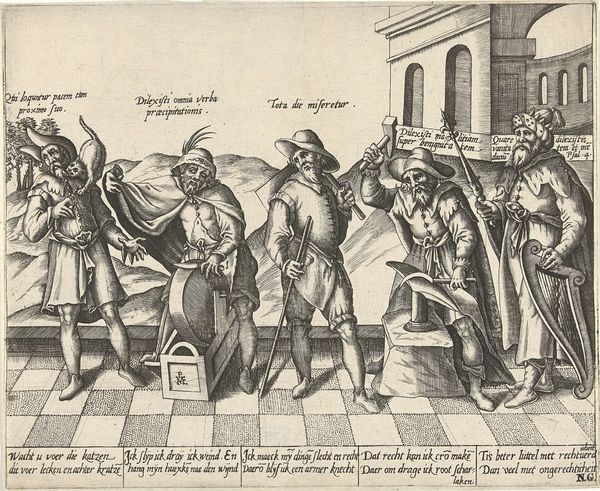
print, etching, engraving
#
baroque
# print
#
etching
#
history-painting
#
engraving
Dimensions: height 206 mm, width 546 mm
Copyright: Rijks Museum: Open Domain
Curator: Here we have Pieter Nolpe’s print, "De begrafenisstoet van Frederik Hendrik (plaat nr. 15)", created around 1651. It's an etching and engraving, depicting the funeral procession of Frederick Henry. Editor: My immediate impression is one of somber formality, even rigidity. The composition, a frieze-like arrangement of figures, seems to underscore a profound sense of protocol and decorum. Curator: Precisely. The artist employs a linear style, typical of the Baroque period, prioritizing clarity of form. Each figure and emblem is rendered with meticulous detail. Consider the precise lines defining the fabrics, the faces, and especially the heraldic symbols. Editor: The symbols strike me as significant here. The procession isn’t just about mourning an individual, but also about affirming power structures. These aren’t simply portraits; they are political statements about lineage, authority, and territorial claims. The banners especially suggest these hierarchies. Curator: Absolutely. Note the deliberate arrangement of figures and banners, a choreography meant to emphasize status. Nolpe skillfully used line and shading to convey the texture and weight of the materials. The play of light across the composition further guides the eye, drawing attention to focal points within the arrangement. Editor: What I see beyond the impressive artistry is a representation of societal power dynamics made visible. It serves as a stark reminder of who gets remembered and how their stories are told – primarily elite, white, and male subjects, memorialized through publicly funded displays like this. Curator: Though one can critique the power structures it memorializes, it undeniably exhibits artistic ingenuity through the effective organization of its elements into a comprehensible whole. There's great value to be had examining its structural organization alone. Editor: And the impact these structures continue to have on how we relate to art. Nolpe's composition is visually powerful. Curator: It truly gives us insight into 17th-century visual culture and how such spectacles reinforced social hierarchies, no doubt. Editor: Absolutely, seeing how they influence our own.
Comments
No comments
Be the first to comment and join the conversation on the ultimate creative platform.
